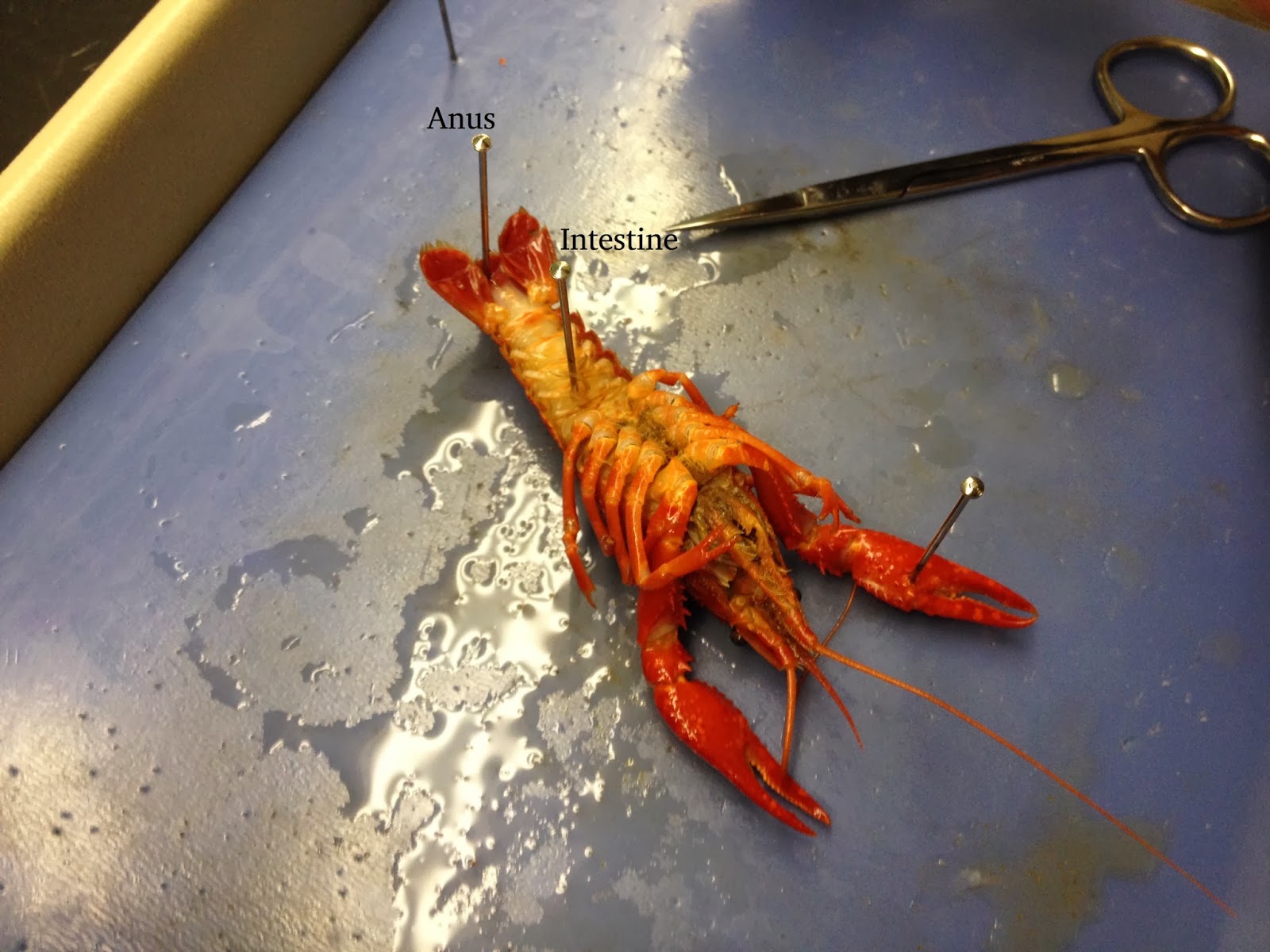Squid and Crayfish Dissection
First, we pinned the squid's body parts, as shown below.
The squid is a fine and delicate creature. Ironically, it has a part of it that is called the "pen." We used this "pen" and the squid's ink to write our name on a piece of paper.
Unfortunately, I did not have a copy of the squid's length, width, or weight. However, I do distinctively remember that our squid was a female, due to the clear gonads (aside from the fact that we opened it up and discovered eggs).
We were supposed to dissect shrimp. However, a crayfish has a lot of similarities to a shrimp, aside from the pincers the crayfish is equipped with.
Our crayfish weighed 16.9 grams, much less than the squid. It had a length of 10.5 cm and a width of 4 cm. Our crayfish, according to our instructor, was too a female.
.JPG)


















